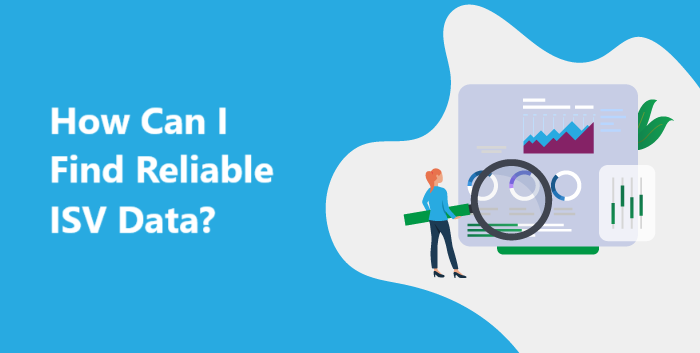If you haven’t hyper-segmented your market as part of your marketing plan yet, 2023 is the year to do so! Hyper-market segmentation not only helps you send the right message to the right people every single time, but it also helps retain customers in the long run.
If you already have a general market for your products and services, you’re one step in the right direction. You’ll only have to further segment your audiences so that you can push forward and rise above your competitors.
But what is hyper-market segmentation, and why is it so essential to your business’ success? Read on to find out!
What Is Market Segmentation?
Market segmentation is the process where you divide your target market into smaller groups based on shared characteristics like age, location, income, behavior, personality traits, interests, or needs.
You can then use this segmentation to enhance sales, marketing, and other related activities.
With segmentation, you can develop strategies for various customer types based on how they view the overall value of certain products and services. This way, you can introduce a more personalized message with the certainty that it will be well-received.
You can even use your segments to find specific target audiences for events to ensure relevancy, or even go above and beyond with personalized recommendations based on their purchase history.
Hyper-segmentation goes even further by focusing on niche audiences that are not a core focus for your competitors. The trick is to make sure that your focus is not too niche that it’s like looking for a needle in a haystack.
What Are The Benefits Of Market Segmentation?
Market segmentation makes it easier for marketing and sales teams to create highly targeted and successful campaigns.
The information your teams will gather through segmentation helps them tailor their strategies. This makes it easier for you to use your time and resources wisely. You can avoid promoting products and services that your target market would never be interested in, protecting you from wasting resources and running unsuccessful initiatives.
With market segmentation, you can:
1. Create Compelling Marketing Strategies
Segmentation helps you discover opportunities to develop customized campaigns.
You can understand client behavior by using the data to understand their needs, preferences, and reasons for their behavior. By doing this, you can develop marketing plans that cater to the needs of various market segments rather than using a one-size-fits-all approach.
2. Improve Your Use Of Resources
Market segmentation allows you and your teams to concentrate on particular customers or demographics.
Segmentation helps you develop strategies that are effective and resonate with the right target market. This allows you to save time, money, and the energy of your teams by not selling products and services your clients don’t want or need.
3. Provide Personalized Offerings To Customers
Once you have a better understanding of your target market, you can focus on tailoring your efforts to satisfy a particular client segment. And there’s no better way to ensure satisfaction than to deliver the right product, service, or content to the right audience.
4. Build A Strong Brand Image
With market segmentation, you’re essentially forced to consider how you want to be regarded by a particular group of people. After identifying your market niche, you must then decide what message to craft.
The fact that this message is directed at a specific audience suggests that a company’s branding and marketing are more likely to be very intentional. This can also have the unintended effect of improving customer interactions with your business.
5. Foster Customer Retention
Segmentation is a great way to provide a personalized experience and address each customer’s specific wants and needs. By doing this, you will improve the loyalty of your current customers and establish trust with them.
When you have a clear understanding of what each customer segment needs, it can be easier for you to create an informed action plan. Customers respond favorably to more direct, personal marketing strategies that encourage a sense of inclusion, community, and belonging.
6. Differentiate Yourself From The Competition
Thanks to market segmentation, you can pinpoint the exact message you want to convey to your target audience and competitors. This can also help with product differentiation by clearly stating how your business differs from the competition.
You’re basically crafting a specific image that is more likely to be memorable and specific than simply going for the general and broad approach to marketing.
7. Improve Your Targeting For Digital Advertising
Because of marketing segmentation, businesses like yours can implement more effective targeted advertising methods. This includes social media marketing strategies that target people of a certain age, area, or behavior.
What Are The Types Of Market Segmentation?
If you want to start segmenting your market, the best way to go about it is to understand the types of market segmentation first.
Marketers often divide their customer bases using one of four distinctive types. To obtain the information you need to divide customers into these specific segments, you can leverage your existing customer data, monitor their customer journey, or conduct customer segmentation surveys.
While there are four segmentations, keep in mind that you can’t restrict your customers to these specific groups. It’s even preferable to combine two or three segments to create better and more targeted marketing messages and experiences.
The four types of segmentation include:
1. Demographic Segmentation
Demographic segmentation groups your target market by factors such as:
- Age
- Education
- Gender
- Race
- Family Size
- Occupation
- Nationality
This type of market segmentation is one of the simplest and most widely used because the products and services we buy, how much money we’re willing to spend on them, and how we use them are quite often based on our demographic factors.
2. Geographic Segmentation
Geographic segmentation is a sort of segmentation in and of itself, but it can also be considered a subset of demographic segmentation. It creates various target customer groups based on geographical boundaries.
Because potential customers have wants, needs, preferences, and interests that vary according to their geographies, understanding the climate and geographic locations of your customer groups can help you decide where to sell and advertise. It can even inform you as to where you can expand your business.
3. Psychographic Segmentation
Psychographic segmentation groups your target market according to their psychological traits, such as social status, hobbies, lifestyle, attitudes, values, and interests.
All of these might help you gain an understanding of the factors that motivate a customer to make a purchase. By becoming aware of their motivations, preferences, and beliefs, you might be able to find a new way to approach your customers.
4. Behavioral Segmentation
Behavioral segmentation divides your customers according to their behavioral characteristics, like loyalty and spending patterns.
This method of segmentation categorizes your consumers into occasion-oriented, benefit-oriented, usage-oriented, and loyalty-oriented groups. Using this will give you a better understanding of the customer experience. When you know what benefits or reasons your customers have for buying your product or service, you can promote it by emphasizing its value.
Go For Business Growth And Success This 2023 With Market Segmentation!
Market segmentation helps you focus on specific customer segments rather than the whole public, which makes planning campaigns easier. With this technique, your teams can use their time and resources more effectively.
Plus, you’ll be able to understand your clientele much better. You’ll gain a better grasp of their needs and wants and tailor campaigns to customer segments that are most likely to purchase your products or services.








